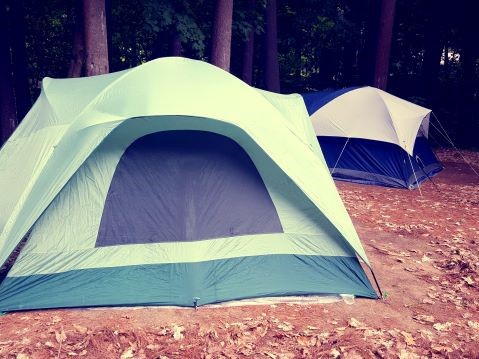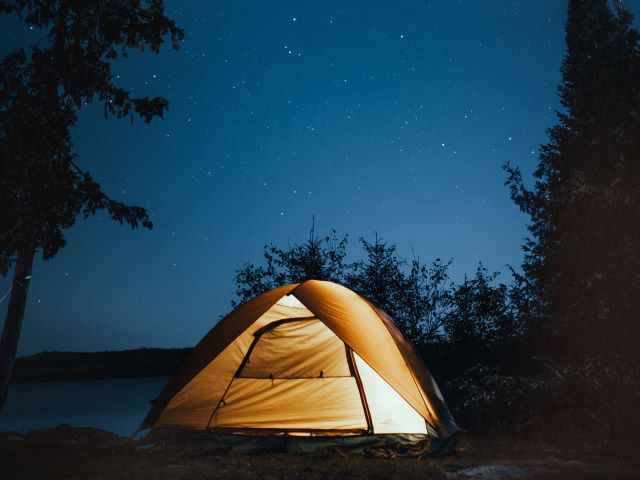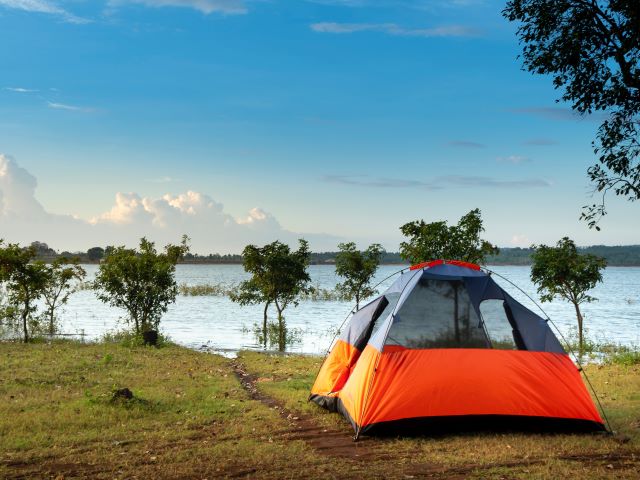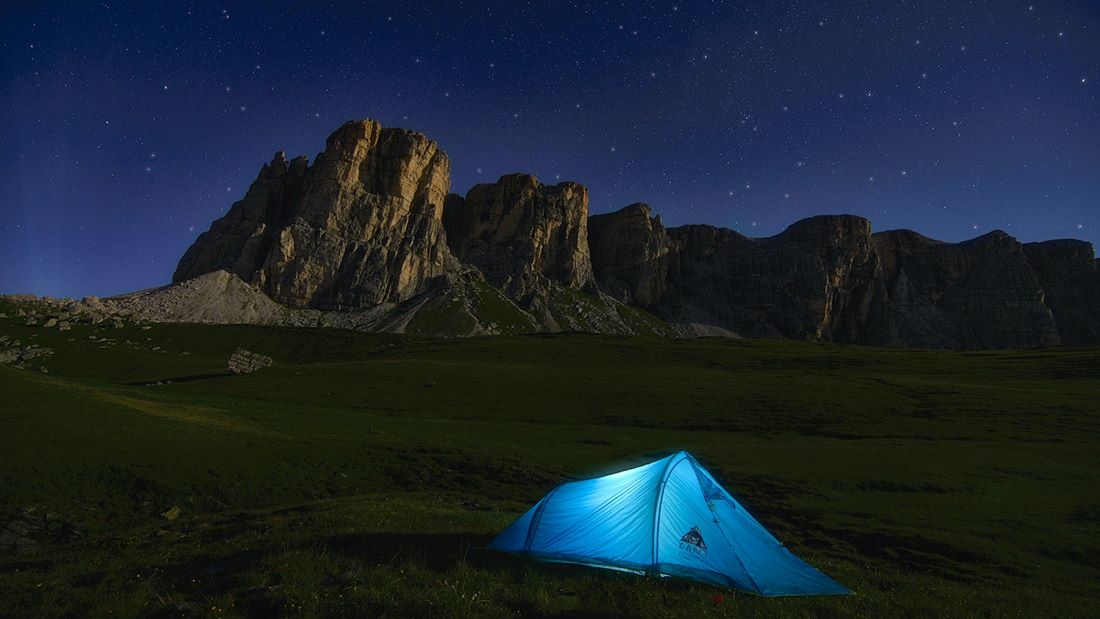If you are already planning your next backpacking adventure, one thing is sure, the right gear can make your experience all the more pleasant. Picking the best backpacking tent is a great way to increase comfort and safety, but with all the options out there, you must be utterly confused as to which one is genuinely the right one, and how to decide.
What to look for when picking the right tent
As we said, gear can either make or break your backpacking trip, so you have to choose wisely. With the tons of options and specs to compare, we have extracted the most vital information to help you pick the best backpacking tent on the market.
Whether you like luxury, comfort, or you are after a budget model, the following information is worth noting.
Weight
We are talking about backpacking trips, so weight is one of the most important specs to look, since you will be carrying all that weight on your back, after all. Namely, here we will be talking about two-person models, and starting from the budget tents, you will find most tents on the market weighing around 5 pounds or more. That weight should be a mark because anything above simply isn’t practical. More expensive tents range from 2 to 3 pounds, however, one thing that attributes to this weight is the gear included. For instance, if you are using straight tent poles, it will weight a bit more in comparison to using lighter trekking poles for support.
Price vs. quality
If you already have a set budget, then this won’t help you as much, but if you are loose on the budget, then let’s talk price and quality. Think how often you plan on using your tent. Then consider the terrain on which you will be setting up your tent and the miles you will be passing each day. If your answers are very often and any type of terrain and dozens of miles each day, then opting for a more expensive tent will be absolutely worth it. After all, what’s the point of buying several cheap tents a year, when you can break the bank and buy one higher-quality to last for many years to come? Plus, as the price goes up, the weight and packed size go down, as well as proprietary gear and high-quality materials that will stand up to any weather. Makes sense? Great!
Space vs. packed size
We have touched base on the weight and packed size when comparing the prices and quality of tents, but since this is a crucial aspect (size does matter, after all!), let’s talk further.
Logically, the most space an open tent offers, the larger it will be when packed. There is a difference when buying a one-person tent or double, so we always recommend getting a solo tent since splitting up the weight is very helpful. One downside to choosing large space tents is their packed size making it difficult to be squeezed into a backpack or simply taking a lot of space in it.

You will notice that many tents offer pockets, vestibules, chunky pole hubs, or gear lofts, which ultimately add more bulk than weight. So, while having interior space is helpful and makes the trip more comfortable, remember that it is a tradeoff between comfort and weight.
Durability
The durability of a tent is primarily determined by its Denier rating stated by the manufacturer. This rating is for their fabric yarn’s weight. The numbers of the denier more commonly range from 15D to 70D, whereas the lower value indicates that the tent uses thinner and less durable fabric. In contrast, the higher denier indicates a more robust, durable fabric. We have found that the right balance between the two sides is a 30D mark, but you have to make that decision based on the terrain you mostly travel through since the floor of the tent in the most vulnerable.
Weather protection
Avid backpackers don’t let the weather stand in the way of their trips and adventures. If you’re one of those, then your tent needs a good rainfly. A rain-what? A rainfly is the first line of defense when bad weather strikes, and it is the outer floorless, waterproof layer of a double-wall tent. All those single-wall tents are made of the rainfly only with a floor attached to it.
So, if you are planning on backpacking through rainy months and cold temperatures, then go for a double-wall tent with a solid rainfly covering the body of the tent. It won’t only protect you from the rain but also strong winds and generally low temperatures.
Another aspect of an excellent weather-protecting tent is its structure. More robust tents offer poles, and pole systems that won’t bow during strong winds and with their strong body of fabric will provide increased weather resistance.
Ventilation
Ventilation is essential, especially for longer trips or backpacking in summer. See, to get a tent with a sound venting system, you have to pay attention to the amount of mesh on the body, especially with the combination of mesh and rainfly in the double-wall tent. If your tent has a lot of mesh, taking the rainfly off will enable proper ventilation even in hot weather (as long as the sun isn’t hitting you directly). However, having your rainfly on your double-wall tent during rain can make things a little thicker. So to get rid of this problem, there are tents with roof vents on the top of the rainfly which can vent the air and still protect you from the rain so long as it doesn’t rain sideways.
Mount and dismount

While mounting a tent in the past required some serious savvy skills, these days, the mounting and dismounting of a tent is significantly more effortless and time-saving. Search for a tent that has streamlined tent poles easy to come together.
See, most of the tents require setting up the footprint, staking out the corners, and attaching the poles to be mounted. The only thing left is spreading out the rainfly evenly for a process that takes less than several minutes.
Whatever the design may be, it’s always smart to set your new tent up at home first. This way, you can pinpoint all the issues you might have later when backpacking. You can also see if you have all the necessary components, and can contact the manufacturer for additional information or help with it.
Footprint
Speaking of setting up your tent, footprints are extremely helpful to have as protection of the floor of your tent. They are optional, though, and not every tent comes with one, so it is smart to ask the seller or simply buy one additionally. It will extend the life of your tent by protecting the lower layers from rocks, dirt, sharp tree sap, and the usual wear and tear that happens over time. Ultimately it all depends on the type of terrain you use your tent on and how often you go backpacking in general, but our recommendation is to have one at all times regardless.
Backpacking weight spec made easy
While there is no set standard for measuring tent weights on the market, with all the vast amounts of information what it better and what’s not, weight specs can get a little confusing. However, the following are some general ideas and tips that will help you make sense of the numbers.
Packaged weight
This number indicates how much your tent weighs when packed with all the accessories, and it’s a number that most accurately presents your tent’s weight. After all, you will be carrying it with all its gear on your back.
Minimum Weight
The minimum weight of your tent is a number that you get when you exclude all the optional or unnecessary components for a trip. It’s not always genuinely calculated because it may exclude the rainfly or the poles, but you might need them depending on the type of trip. This number also excludes the tent stakes, guy lines, and stuff sacks too.

Measured Weight
The measured weight measures the body of the tent with some of the most necessary gear like rainfly, tent poles, tent stakes, and stuff sacks. These are the things that you will be likely carrying on your trip, regardless of when and where you are backpacking. This is why this number is sometimes more important than the minimum weight value.
Tent Poles and Stakes
Without getting into much detail on this, aluminum poles are proven to be better than any other type of poles. They are more flexible, don’t weigh as much, and are relatively affordable. Furthermore, another aspect of setting up your tent securely, are its stakes. Most tents come with six hook-style aluminum stakes as standard gear which is fine for a sunny, mildly windy weather. For storms, rain, and strong winds, you will need extra stakes that are sharp, light, but tough, and easy to put in the ground. The reason why we recommend upgrading is that most of the stakes included are hook-style aluminum stakes that bend when being hammered in and are too thick to sink into the ground easily.
Tent care
A little care goes a long way, so here are some general care tips that will save any tent.
- Use a ground cloth as an addition to the footprint under the tent no matter what the terrain is or how long you’re staying.
- Bring a cloth or a math to put near the entrance of the tent to wipe off muddy shoes and catch sand.
- Don’t enter your tent with shoes.
- Regularly sweep the floor to remove sharp stones.
- Don’t eat inside the tent and keep the food securely stored because critters and bugs are willing to chew through the tent fabric when hungry.
Our choices
Our first pick is the Coleman Sundome Tent. It is a rather cheap option, and the only of our choices that doesn’t offer a single person option.
It is easy to assemble, in only 10min, and has everything you could ask for: included rainfly, optimised ventilation, and an e-port for easy electrical access. It also is very roomy with its 84x60in floor and 4ft center height.
Not meant for extreme weather, but the 75 Denier is actually pretty good, and the polyester build is sturdy and waterproof.
Next we have the ALPS Mountaineering Lynx 1-Person Tent. Being the most expensive from this lot, it is also the most complete, lightweight and easiest to assemble of them all.
This tent is water resistant and has UV protection, 75D resistance, numerous pockets and lots of storage space, and its freestanding 2-pole design makes it really easy to put up. The base size has a lot of room, at 32x90in, with center height of 3ft and the total weight is only 4,1 lbs.
It comes with lifetime limited warranty.
Our final pick is the Bessport Camping Tent. This has a nice quality/price racio and is also roomy (87,8×33,5in), lightweight (only 4,4lb total) and durable (68D polyester).
The micromesh fabric gives you plenty of air, but the included full-coverage rainfly will protect you from rain and wind. The easy setup will take only a couple of minutes.
Besides the rainfly, it includes the aluminium stakes, reflective guy line rope, and a carrying bag. They also give you a limited lifetime warraty.
As stated before, most tents come with simple aluminium poles which won’t do much for you in worse than mild weather, so we suggest the Eurmax Galvanized Non-Rust Stakes, which are 10in galvalized steel stakes with pvc stoppers and come in a 10-pack with 4 bonus 10ft ropes.
We also would like to suggest the REDCAMP Waterproof Camping Tarp. It comes in a number os sizes, so you can chose which best fits your tent, and will give the much needed protection for the base of your tent.
Final Word
All in all, we hope we have cleared any doubts and uncertainties when it comes to choosing the right backpacking tent. Now, all that’s left is picking your next adventure destination and enjoying the trip with your reliable gear.





